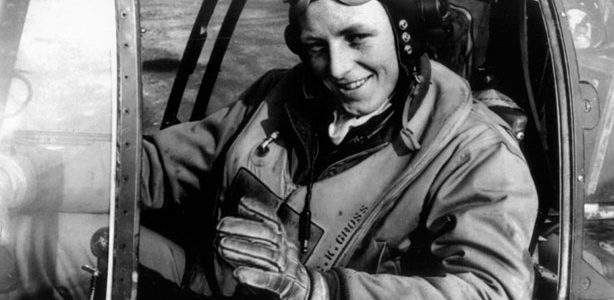They must have been a sight for sore eyes to the soldiers on the beach as wave after wave of fighters, bombers, and paratrooper-stuffed transports, some towing gliders, passed overhead, all of them adorned with black and white painted stripes. The invasion was on, and many of the fighter pilots expecting a Luftwaffe slugfest were disappointed by the dismal numbers that showed up. But there were still plenty of targets both on the ground and in the air for those lucky enough to be at the right place at the right time. Follow along with these “little friends” about the historic day known as D-Day: the 6th of June, 1944.
Twin-Tailed Trouble
Captain Stanley P. Richardson, Jr
338th Fighter Squadron, 55th Fighter Group, 8th Air Force
In early June of 1944, my original P-38J, CL-X, had been wrecked by a fellow pilot while I was on leave. I returned to see my pride and joy lying on its belly from a combat encounter. My bunkmate, who was at the controls of my Lightning, told me he had an engine shot out while tangling with the Luftwaffe and made it all the way back to base in England when he got cut off by a landing B-17. With wheels down, flaps out, and only one prop turning, he ran out of options, raised the gear, and bellied it in. Thankfully, with a war going on, there were many P-38s sitting around waiting to be assigned.
I was issued a new P-38 and my ground crew got it ready to fly. Unfortunately, the day I was supposed to give it a test hop, everything was grounded so the ground crews could paint black and white stripes on our airplanes — invasion stripes. I would have to perform double duty on my next flight, a combat mission and test hop all rolled into one.
On June 5, I was slotted to fly a night mission over the English Channel to cover the invasion beaches along the French coast. The P-38s were selected because they were extremely recognizable with twin engines and twin tails, and nothing else looked like them. Our instructions were simple: “If you see anything flying over the beaches, shoot it down — no questions asked. Destroy anything that is not a P-38 entering your assigned patrol area.”
We departed our base at Wormingford very late in the afternoon. The weather was terrible with low ceilings and heavy rain as we struck out for our patrol area. From 1,500 feet, I saw countless numbers of boats of all shapes and sizes all over the channel heading for France. What a sight! We orbited the beaches and I saw some sporadic gunfire, but nothing that would compare to the next day. We landed well after dark and trudged to our bunks for some rest.
It was short-lived, however, because very early the next day, June 6, we were rolled out of our bunks at 3:00 a.m. and, after eating breakfast and receiving our briefing, we were once again over the beaches by 5:30 a.m.
There were P-38s all over the sky with the 20th and the 479th Groups milling around overhead with us. There was not a German airplane in the sky that we saw, but had one shown up, it would have been torn to shreds with the combined firepower of our cannon and machine guns we carried in our noses. I flew three missions on D-Day and am proud to say the Allied air forces owned the airspace above the beaches. But as our troops on the ground moved inland, we followed from above and went after targets of opportunity.
Personally, I liked going after trains, but the Germans didn’t take too kindly to that. Early in the war it was a piece of cake to shoot up locomotives and freight cars; that was until the Germans added “Q-cars” (like Q-ships) to the mix. They looked like any other freight car until the sides dropped and exposed quad 20mm cannons able to fire in all directions. Our loss rate of fighters shot up dramatically with these Q-cars. Strafing trains became dangerous work and a lot less fun!
By James P. Busha
To read the article from the August issue of Flight Journal, click here.
















